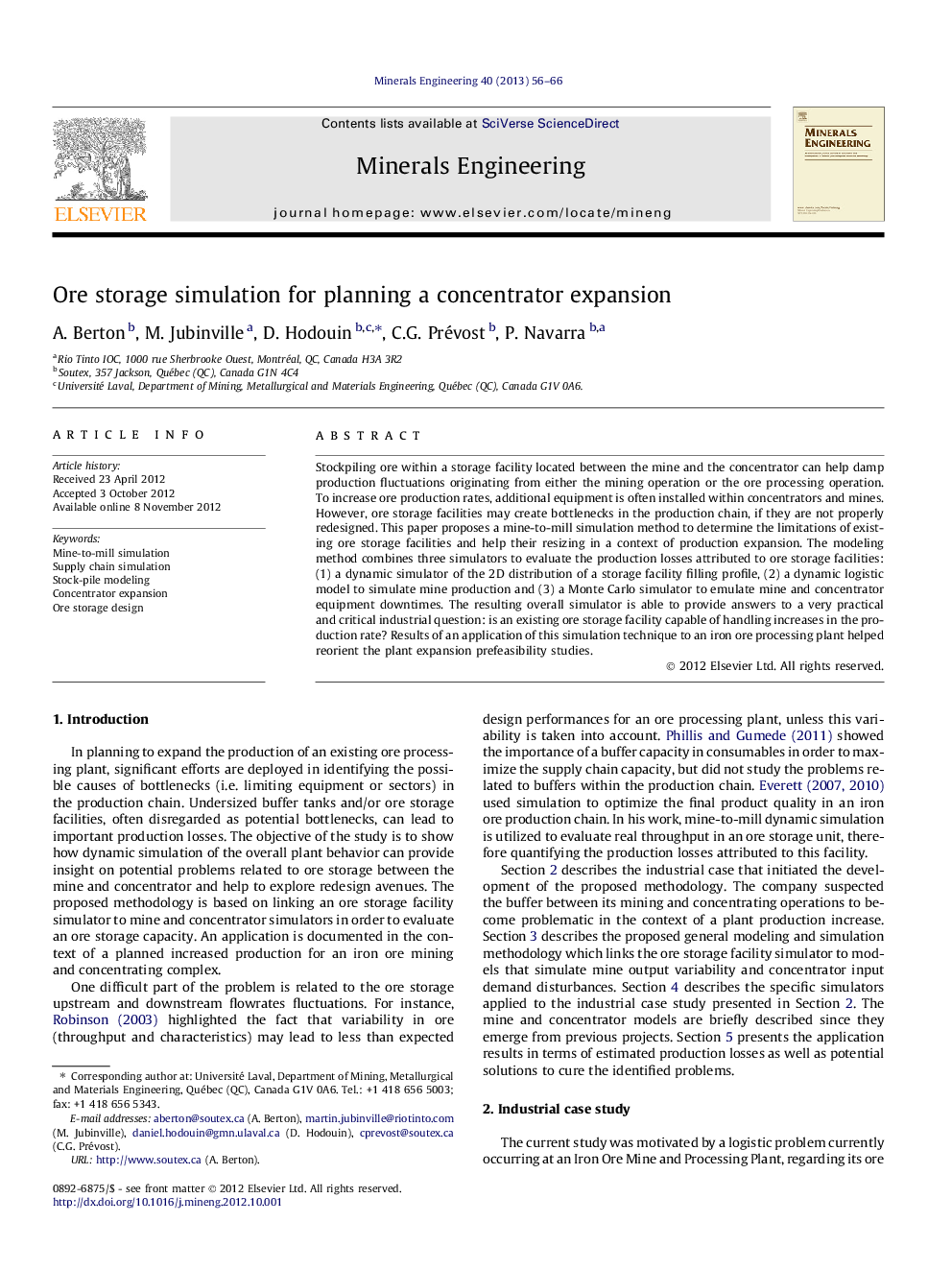| Article ID | Journal | Published Year | Pages | File Type |
|---|---|---|---|---|
| 233506 | Minerals Engineering | 2013 | 11 Pages |
Stockpiling ore within a storage facility located between the mine and the concentrator can help damp production fluctuations originating from either the mining operation or the ore processing operation. To increase ore production rates, additional equipment is often installed within concentrators and mines. However, ore storage facilities may create bottlenecks in the production chain, if they are not properly redesigned. This paper proposes a mine-to-mill simulation method to determine the limitations of existing ore storage facilities and help their resizing in a context of production expansion. The modeling method combines three simulators to evaluate the production losses attributed to ore storage facilities: (1) a dynamic simulator of the 2D distribution of a storage facility filling profile, (2) a dynamic logistic model to simulate mine production and (3) a Monte Carlo simulator to emulate mine and concentrator equipment downtimes. The resulting overall simulator is able to provide answers to a very practical and critical industrial question: is an existing ore storage facility capable of handling increases in the production rate? Results of an application of this simulation technique to an iron ore processing plant helped reorient the plant expansion prefeasibility studies.
Graphical abstractFigure optionsDownload full-size imageDownload as PowerPoint slideHighlights► Integration of three simulators in a mine-to-mill application. ► Plant expansion feasibility linked to an ore storage bottleneck. ► Development of a 2D dynamic ore flow model of the ore storage 3D shape. ► Calculation of losses attributable to the ore storage bottleneck simulated on a yearly basis. ► Evaluation of three simulated scenarios for mitigating losses.
